As far as I'm concerned ground covers are one of Mother Nature's most wonderful gifts to gardeners. They blanket the earth with their lovely colors, choke out weeds and protect the soil from being washed away by our incessant rains. The more of them I've introduced into the garden the more I love them.
At this point I have a fairly wide range of ground covers.
Blue Star Creeper (Laurentia fluviatilis ’Blue’) forms a very dense 1/2 to 1 inch mat of lovely rich green. It blooms in July here with little blue stars. It is partially evergreen and disappears here in very cold winters to return again in March or April.
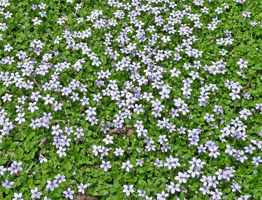
Corsican mint (Mentha requienii) has tiny little green leaves and even tinier little purple flowers. When you run your hand over the leaves they smell like the best peppermint in the world. It loves to climb up the sides of rocks and does better in a little bit of shade than in full sun. It too mostly disappears in the winter and will return again in summer sometimes a little displaced from where it was the year before.
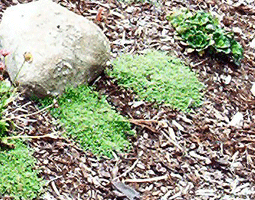
Creeping Thyme (Thymus praecox ssp. arcticus) has wonderful purple flowers but it grows a good inch or more tall so it doesn't form as dense and thick a mat as wooly or elfin thyme.
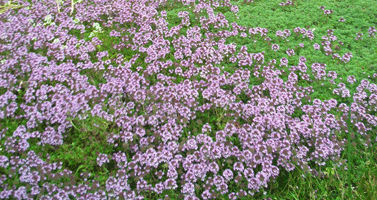
Elfin thyme (Thymus serpyllum 'Elfin') forms in incredibly dense mat of tiny leaves that is less than a 1/2 inch tall. It tolerates quite of bit of foot traffic and I consider it a terrific ground cover especially in walkways.

Wooly Thyme (Thymus lanuginosus)also forms a dense mat and is a wonderful cool green that is a perfect foil for roses and herbs. Here you can see it side by side with creeping thyme. The wooly thyme is on the left while the creeping thyme is on the right with a few flowers.

Creeping veronica (Veronica peduncularis ’Georgia Blue’) is a much taller plant than the thymes. It gets up to 4 inches tall with lovely blue/purple flowers. It might be better viewed as a good filler plant than a ground cover.
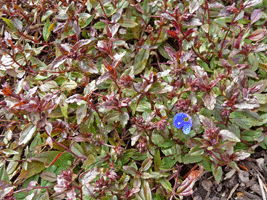
Kinnikinnik (Arctostapholyus uva ursi) is a NW native that is simply wonderful. It is evergreen, tolerates partial to full sun and is very drought tolerant. It is not extremely fast growing but will form a dense mat that keeps out almost all weeds within a few years especially if you water it the first few years. It has lovely pink flowers that are followed by red berries that the birds love.
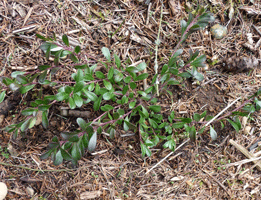
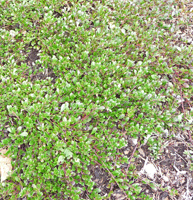
Young Kinnikinnik Mature Kinnikinnik
Snow-in-summer (Cerastium tomentosum) makes a great filler plant and has lovely grey/white foliage in addition to pure white flowers in June to July. It spreads pretty quickly especially in full sun. I tried it in partial shade and it was NOT happy there.
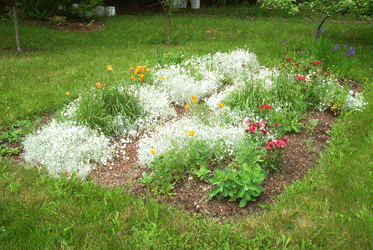
Cascade stonecrop (Sedum divergens) is a native NW sedum that will grow in full sun to full shade. It covers slopes very nicely and clings to rocks too.
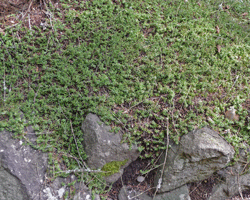
In the sun its leaves are red and in the shade they are a deep grey green.
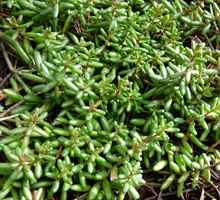

Sedum divergens in the shade and the sun where it's red
It tolerates absolutely awful soil and just keeps spreading. In sun to partial sun it even produces yellow flowers on little 2 inch stalks.
Cape Blanco Sedum (Sedum spathifolium 'Cape Blanco') is a beautiful light grey almost white-leaved plant that lights up areas in partial shade. It also grows just fine in full sun. It's not as fast growing as Sedum divergens but the two go very well together.
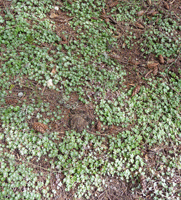
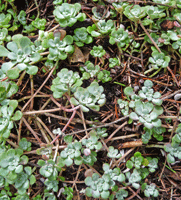
Variegated Vinca Major (Vinca major 'Variegata') has wonderful cream-edged leathery leaves and large purple flowers. It puts out long runners that eventually form thick mats. It does very well in full sun here and is supposed to grow well in shade too. I have some struggling in deep shade where I'd hoped their variegated foliage might lighten things up. It will soon be replaced!
